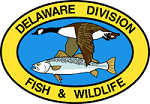Search Level: Standard
Search Term(s): Persicaria punctata (1 record found)
Search Term(s): Persicaria punctata (1 record found)
POLYGONACEAE
Smartweed Family
Smartweed Family
Persicaria punctata (dotted smartweed)
[ + ]
Synonym
Polygonum puncatum Ell. var. confertiflorum (Meisn.) Fassett;P. punctatum Ell. var. parvum Vict. & J. Rousseau;P. punctatum Ell. var. punctatum
Carex Section
--
Meaning of Scientific Name
Persicaria: Medieval name referring to the likeness of the leaves to a peach tree; punctata: spotted, dotted with glands
Native Plant
Yes
Life Form
Annual Herb
Phenology (Flowering Period)
August-September
Physiographic Province
☑ Piedmont
☑ Coastal Plain
County Distribution
☑ New Castle
☑ Kent
☑ Sussex
Habitat
Tidal and non-tidal marshes and shores, swales, stream banks, ditches
State Status
Common
Piedmont Status
Common
Coastal Plain Status
Common
Global Rank
--
Federal Status
--
Geographic Affinity
--
Species at Limit of Distribution
☐ Northern
☐ Southern
North American Distribution (Non-indigenous Species)
--
Coefficient of Conservatism
4
Invasive
--
Invasive Watchlist
--
Global Origin (Non-native Species)
--
Wildlife Values
Seeds are an excellent food source for a wide variety of waterfowl and birds, as well as small mammals. Dense stands provide cover for marsh birds and submerged portions of plants provide habitats for invertebrates, which in turn are used as food by fish and other wildlife species.
Medicinal Properties
--
ID Notes
--
Additional Info
This species can be found as a rhizomatous perennial, or a taprooted annual. Plants that grow in both tidal and non-tidal habitats, such as this species will frequently show variations in their habit or growth-form. Plants that grow in tidal habitats will exhibit variations in leaf size and shape, leaf thickness, degree of branching, flower size, color of petals, and the degree to which flowers open, and they will often root at the nodes. Botanists have recognized many of these morphological differences, usually at the taxonomic rank of variety (Persicaria punctatum var. parvum), however these distinctions are not clear and may only be an expression of tidal inundation, so taxonomic recognition may not be justified.
Habitats in which this plant occurs
Freshwater Herbaceous Tidal WetlandsPonds, Lakes, and Reservoirs (Millponds)
Seepage Slope Open Canopy Non-tidal Wetland (Piedmont)


